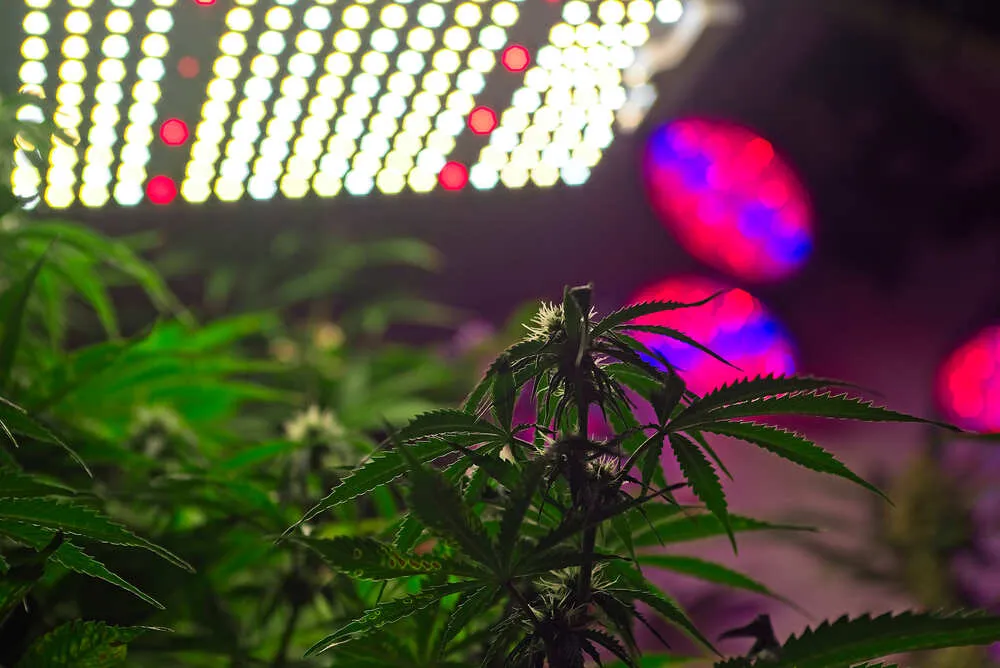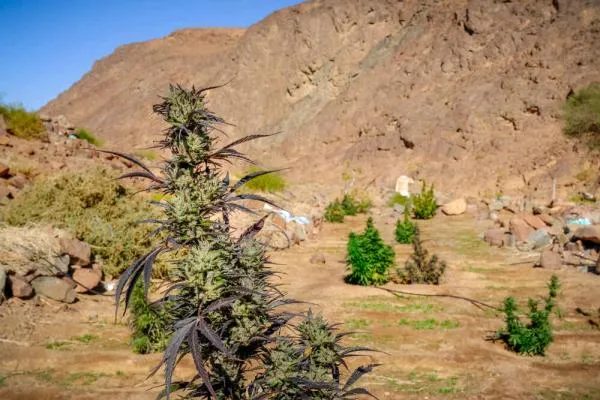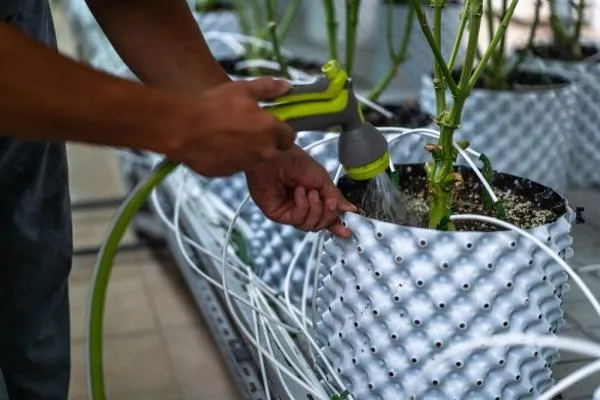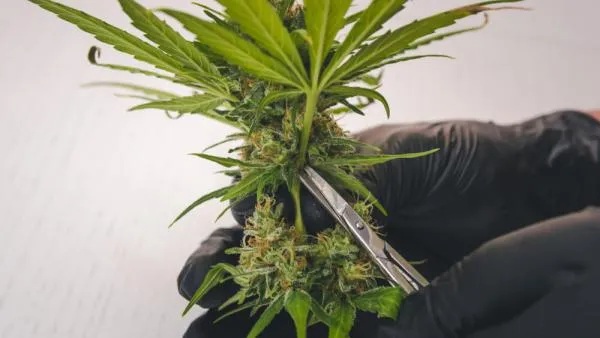Autoflowering strains have taken the cannabis world by storm, offering convenience and fast results. If you're wondering how much yield you can expect from an average autoflower, you've come to the right place. In this article, we'll unveil the answer to the burning question: "How much can an autoflower yield?"
In a nutshell, autoflowering strains have the potential to surprise you with their impressive harvests in a relatively short span of time. Gone are the days of waiting endlessly for your plants to mature. We'll explore the factors that influence autoflower yields, from genetics to growing techniques.
We'll also reveal the tips and tricks our breeders use to maximize their autoflowering plants, helping you to produce those bumper harvests. So, if you're eager to unlock the full potential of your autoflower grow, let's dive right in.
What is the Maximum Yield of an Autoflower Plant?
In optimal conditions, the maximum yield you can expect from an autoflowering cannabis plant is typically around 100-200 grams (3.5-7 ounces) per plant. However, this is a rough estimate based on perfect conditions. Yield varies depending on genetics, growing techniques, and environmental conditions.
On average, autoflower plants usually produce yields ranging from 30-100 grams (1-3.5 ounces) per plant. But if you want to produce as much bud as possible, choose a high yielding strain to give yourself the best possible start.
Wet vs. Dry Yields - How Yield is Calculated
Before going into the factors that affect the yield of autoflower plants, it's important to understand the difference between wet and dry yields and how yield is calculated. When we talk about wet yield, we refer to the weight of freshly harvested buds, including the moisture they contain. Dry yield, on the other hand, refers to the weight of the buds once they have been properly dried and cured.
To calculate the dry yield of your autoflower plants, you'll need to measure the weight of the buds after they have gone through the drying and curing process. This is the true measure of the amount of usable, smokable bud you have produced from your plants.
What Affects the Yield of an Autoflower?
Now, let's take a look at the key factors that influence the yield of autoflowering plants.
Genetics
Genetics play a crucial role in determining the yield of your plants. Strains such as Big Bud and Critical are specifically bred to be as big as possible. When you are choosing a strain, look for autoflowers seeds that are known to produce big yields. Ideally you should be choosing a strain that falls into the bracket of yielding between 500 - 600g/m2.
Lighting and light cycle

Proper lighting is essential for the healthy development of any plant and plays a massive role when it comes to yield. You should consider the type of lights you use, how powerful they are and the light cycle you use.
For indoor growers, high-quality LED grow lights or HID lights provide the necessary spectrum and intensity to support optimal yields. Additionally, ensuring the correct light cycle is crucial.
18/6 or 20/4 is considered the best light cycle for autoflowering plants because it closely resembles the natural summer daylight duration. This extended period of light provides maximum energy for photosynthesis, allowing for rapid growth and development during the vegetative stage. Some growers do opt for a 24 hour light cycle with no darkness, however, this has been known to stress plants on some occasions so may not always be suitable.
Pot Size
The size of the pot or container in which you grow your autoflower plants will significantly impact their yield. A larger pot allows for more root development and nutrient uptake, leading to healthier and bigger plants. Choose a pot that provides ample space for the root system to grow and ensure proper drainage to avoid waterlogging. Pots such as smart pots are excellent for beginners because they offer excellent drainage and are almost impossible to over water because they are made of a breathable membrane.
It is also important to note that when you grow autoflowers, it is better to start them in their final pot instead of transplanting them as they get bigger. This is because transplanting can cause stress and due to the short veg and flowering stages autoflowers may not always have the time to recover.
Training Methods Used

Using training techniques can greatly increase the yield of autoflowering plants. Techniques, such as ScrOG, Sea of Green, topping, and tie and bend, can be employed to increase bud production.
SCROG Growing Screen of Green plants involves training plants horizontally using a screen, promoting an even canopy and maximizing light exposure to lower bud sites, leading to increased yield.
SOG (Sea of Green) involves growing multiple small plants closely together, maximizing space utilization and creating a dense canopy, resulting in higher yields per square foot.
The Tie and bend LST method involves gently manipulating plant branches, tying them down to expose more bud sites to light. This technique promotes even canopy development, larger colas, and increased yield.
Topping refers to removing the top growth of a plant, encouraging the growth of multiple colas. This method helps to create a more bushy and productive plant, maximizing the number of bud sites and ultimately increasing overall yield. Topping autoflowering plants is not always recommended because it can stress them and causes stunted growth. However, if done correctly and on the right strains it can result in much bigger yields.
What the experts say
To get a more expert perspective, we reached out to master autoflower seed breeders Auto Seeds to hear their take on the topic. According to their team, yield potential in autoflowers comes down to genetics, environment, and grower experience—but even with all the right conditions, there’s still a ceiling compared to photoperiods. “The key thing with autos,” they told us, “is understanding their life cycle is set in stone. You can optimize it, but you can’t stretch it.”
Autoflowers have much shorter veg stages than photoperiods, so while the veg stage of a photoperiod can be extended when grown outdoors, autos simply begin flowering within 3–4 weeks no matter what. That means even under perfect outdoor conditions, you’re not going to see yields comparable to photoperiod strains. It’s a trade-off: faster harvests and easier cycles, but slightly smaller hauls.
FAQ
How much will 4 Autoflowers yield?
On average, you can expect a total yield of approximately 120-400 grams (4-14 ounces) from 4 plants. Although this massively depends on which strain you are growing.
What is the average yield per plant 600W light?
With a 600W light, the average yield of an autoflower plant can range from 30-120 grams (1-4.2 ounces).
How big can autoflower buds get?
Autoflower buds vary in size depending if they are sativa or indica dominant. Generally they are small to medium-sized. However, some high-yield autoflower strains can produce larger buds comparable to photoperiod plants.
How long do Autoflowers stay in flower?
Autoflowers stay in the flowering stage for around 6-10 weeks. Sativa strains take 8-10 whereas indica dominant strains can flower in as little as 6 weeks.
Conclusion
Understanding the factors that affect autoflower yield is essential for achieving a big harvests. To get the most out of your autoflowers choose high yielding strains, good grow lights, and the largest practical sized pots, while employing LST training techniques. Remember to track your wet and dry yields to accurately measure your success and continuously improve your growing techniques. Happy growing!










